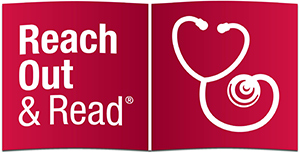Link to full text: https://pn3policy.org/wp-content/uploads/2024/10/PN3PIC_SharedBookReading_EvidenceReview_1024.pdf
Access: FREE/Open Access
Publication year
2024study description
Evidence Reportcore topic(s)
Early Literacy , Early Relational Health , Reach Out and Read (ROR) , Shared ReadingExposures, Outcomes, Other
Anticipatory Guidance , Child Development (general) , Clinic-Based Programs and Interventions , Home Language/Literacy/Learning Environment , Home Routines , Language and Literacy Development , Parent-Child Relationships/Interactions , Reading Frequency , School Readiness and Educational Outcomes , Validity, Reliability, Feasibility, and Acceptabilityobjectives
This report summarizes the evidence to support state-level support strategies, on how programs, like Reach Out and Read, can establish policy for improving outcomes in the prenatal-to-3 period.exposure
RORoutcomes evaluated
Emerging evidence of shared book reading program impacts on child and family wellbeing.methods
This evidence review began with a broad search of all literature related to the policy and its impacts on child and family wellbeing during the prenatal-to-3 period. First, we identified and collected relevant peer-reviewed academic studies as well as research briefs, government reports, and working papers, using predefined search parameters, keywords, and trusted search engines. From this large body of work, we then singled out for more careful review those studies that endeavored to identify causal links between the policy and our outcomes of interest, taking into consideration characteristics such as the research designs put in place, the analytic methods used, and the relevance of the populations and outcomes studied. We then subjected this literature to an in-depth critique and chose only the most methodologically rigorous research to inform our conclusions about policy effectiveness. All studies considered to date for this review were released on or before July 31, 2024.measures
Review
results
Shared book reading programs help families build more nurturing and responsive child-parent relationships. • Parents were 10 times more likely to engage in shared reading with their child at least 3 times per week. • Parents were more likely to include shared reading as part of children’s bedtime ritual. • Parents and children both reported greater levels of shared reading enjoyment. • Families were more likely to have at least 10 children’s books at home by age 2.conclusions
Shared book reading programs provide free, age-appropriate books to children and families with training and guidance on how to read together. These programs promote nurturing and responsive child-parent relationships through the frequent practice of shared reading and the accumulation of literacy resources at home. Shared book reading programs also improve developmental outcomes by improving child language and vocabulary skills. States can support evidence-based shared book reading programs through direct state investments, and by leveraging federal funds through CHIP and the Maternal and Child Health Block Grant. The current evidence base does not provide clear guidance on the optimal funding type or best method for states to support shared book reading programs.ROR
